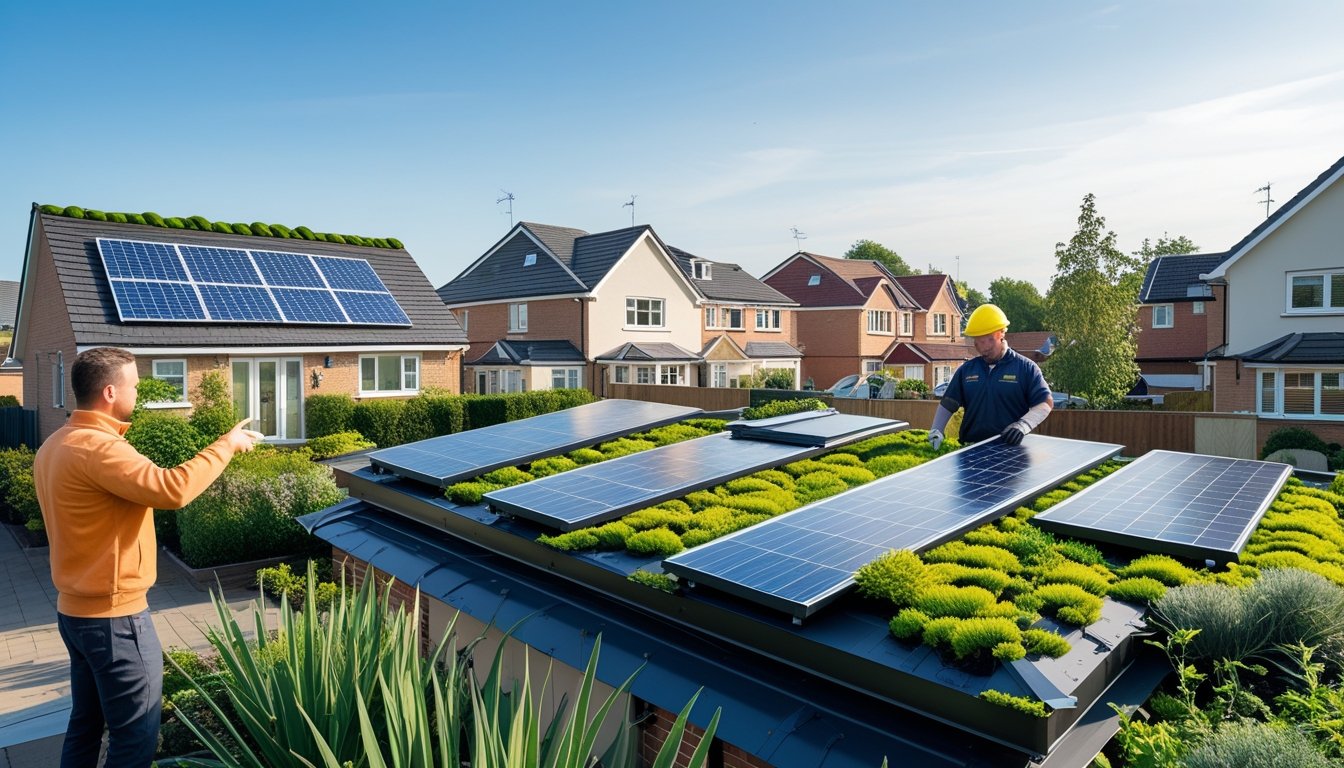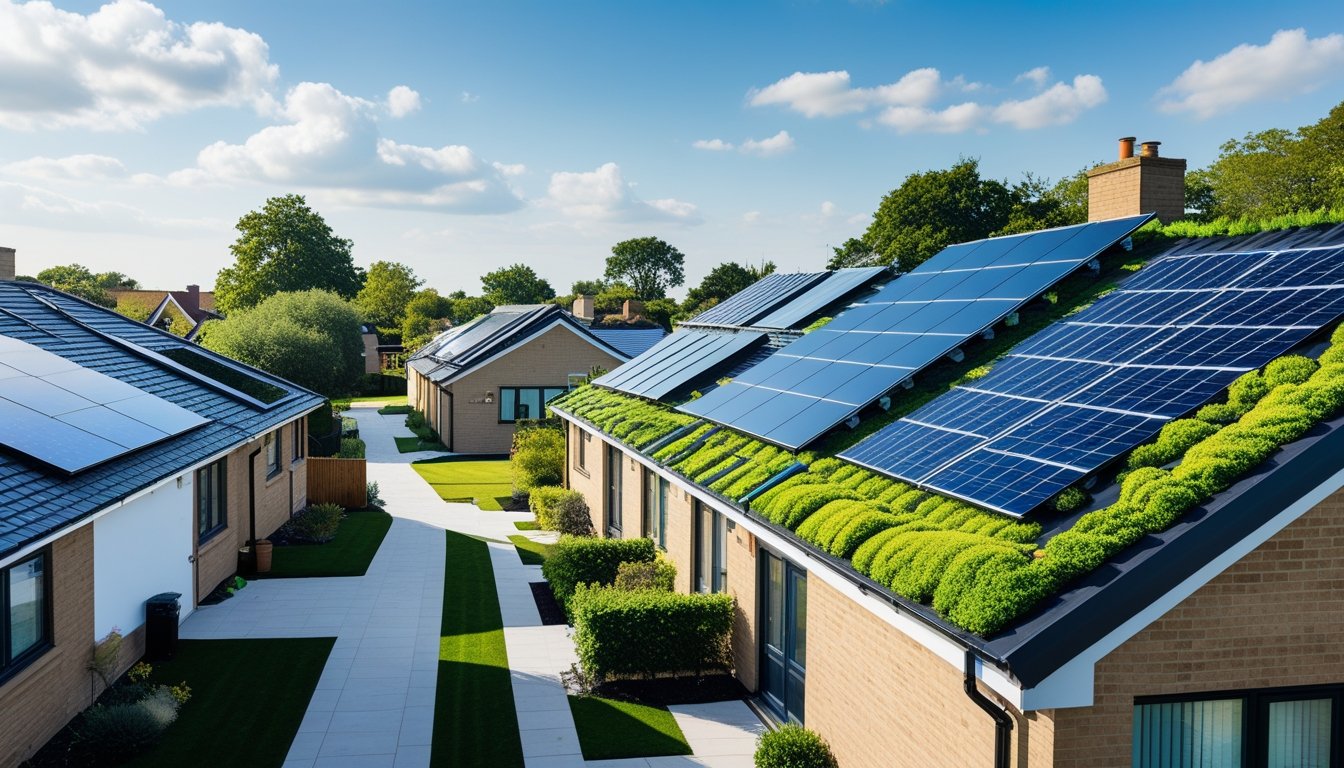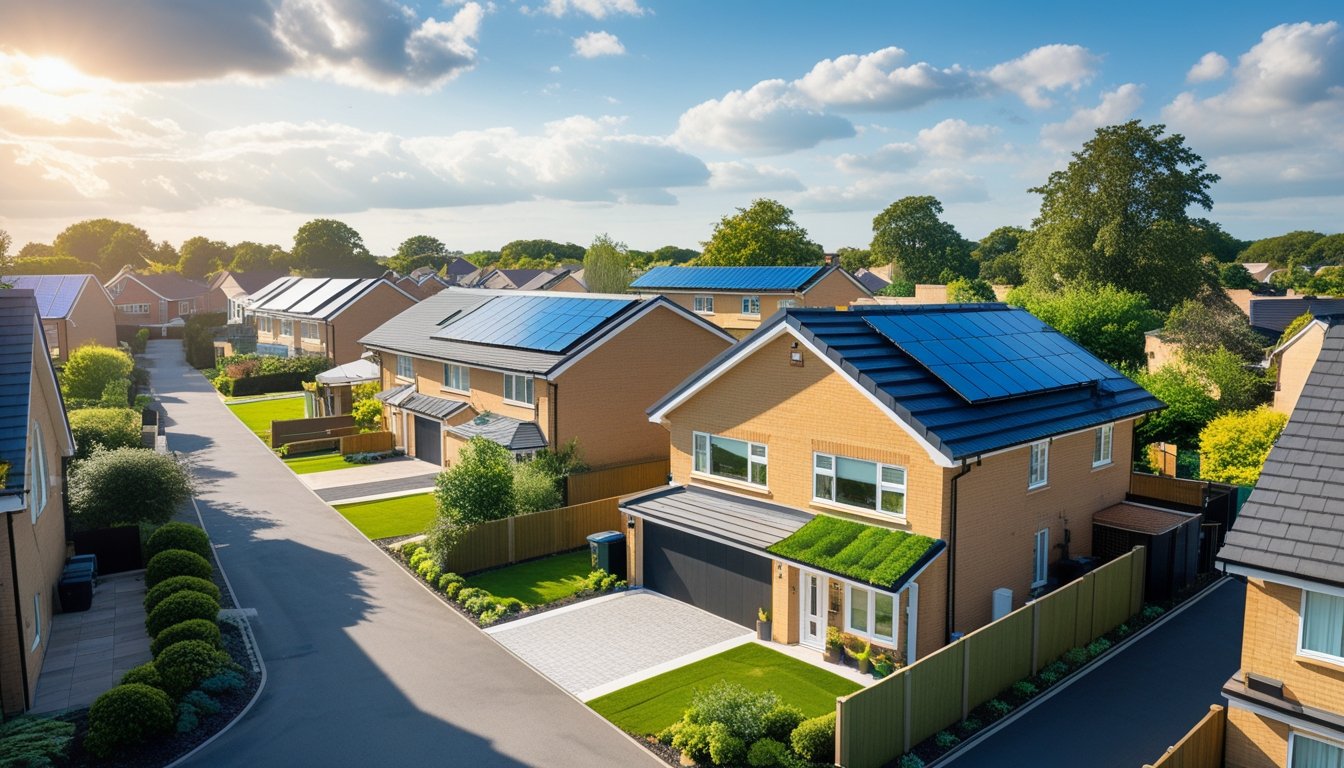Late updated: 28 Jul 2025 11:07
Written by: Oliver Bennett
Choosing Sustainable Roofing Solutions for UK Homes: A Comprehensive Guide
In an era where environmental consciousness is at the forefront of decision-making, many UK homeowners are increasingly looking toward sustainable roofing solutions. Making the right choice in roofing materials can significantly reduce a home's carbon footprint while enhancing its energy efficiency. By focusing on eco-friendly materials like recycled metal and green roofs, we can craft a more sustainable future for our homes and our planet.

Selecting a sustainable roofing option isn't just an environmentally driven decision; it makes practical sense too. From reduced energy bills thanks to improved insulation to potential incentives from local councils, going green with our roofs provides tangible benefits. We can explore options such as solar roofing, which combines sustainability with cutting-edge technology to generate renewable energy right from our rooftops.
Sustainable roofing is more than just a trend; it represents a shift towards responsible homeownership. As we delve into the various options available in the UK, it's crucial that we them as practical investments in both environmental health and economic efficiency. By equipping ourselves with knowledge about benefits and solutions, we can make informed decisions that align with our values and priorities.
Key Takeaways
- Sustainable roofing reduces energy bills and environmental impact.
- Green roofs, solar technology, and recycled materials are key options.
- Incentives and practical benefits enhance the appeal of eco-friendly roofing.
Key Sustainable Roofing Solutions for UK Homes

In the UK, choosing the right sustainable roofing solution can significantly impact energy efficiency and environmental footprint. Options include eco-friendly materials, innovative designs, and energy-efficient technologies. Let's explore the most effective choices available for homeowners.
Eco-Friendly Roofing Materials
Selecting eco-friendly materials is crucial for sustainable roofing. Recycled metal roofing is a popular choice due to its durability and recyclability. Clay tiles offer natural insulation and long life. Moreover, using recycled materials can significantly cut down on waste. Natural wool insulation enhances energy efficiency and is biodegradable. Each material brings its own benefits, from reduced environmental impact to improved thermal performance of homes.
Green Roofs and Living Roofs
Green roofs, also known as living roofs, are an excellent way of enhancing a building's green credentials. These roofs are covered with vegetation, which provides insulation, reduces rainwater runoff, and lowers urban temperatures. The presence of plants can improve air quality and provide habitats for various species, contributing to biodiversity. Green roofs not only enhance the aesthetic appeal of buildings but also improve energy efficiency significantly.
Solar Roofing Technologies
With innovations in solar panels and solar tiles, solar roofing technologies are revolutionising sustainable home design. Integrating photovoltaic systems into roofing materials enables efficient energy production. Solar panels convert sunlight into electricity, reducing reliance on traditional energy sources. Solar tiles merge seamlessly with existing roofs, offering a more aesthetically pleasing option. For homes with good sun exposure, these technologies can lead to substantial energy savings and reduced carbon emissions.
Cool Roofs and Reflective Coatings
Cool roofs, equipped with reflective coatings, minimise heat absorption and keep homes cooler. This technology reflects more sunlight and lowers roof temperatures, significantly reducing energy costs associated with air conditioning in the summer. Reflective coatings are available for various materials, including asphalt and metal roofs, and they prolong the lifespan of roofing systems. By enhancing energy efficiency, cool roofs contribute to environmental sustainability and help reduce the urban heat island effect.
Environmental, Economic and Practical Benefits of Sustainable Roofing
Sustainable roofing solutions offer significant advantages for UK homes. By focusing on energy efficiency, reducing environmental impact, and enhancing biodiversity, these roofs benefit both homeowners and the planet. Moreover, they contribute to stormwater management and mitigate the urban heat island effect, providing comprehensive advantages.
Energy Savings and Efficiency
Implementing sustainable roofing can dramatically improve the energy efficiency of a home. By employing materials with higher thermal performance, we reduce energy consumption and potentially lower energy bills. Cool roofs use reflective materials that help in maintaining lower indoor temperatures, reducing reliance on non-renewable energy sources.
Moreover, integrating renewable energy technologies like solar panels can further enhance energy savings. This not only reduces dependence on external energy sources but also supports sustainable living. Natural insulation provided by green roofs also contributes to better energy efficiency by maintaining consistent indoor climates. As a result, sustainable roofing can significantly contribute to energy savings and economic benefits for homeowners.
Reducing Carbon Footprint and Environmental Impact
Sustainable roofing solutions play a crucial role in lowering a property's carbon footprint. By using eco-friendly materials and limiting the use of non-renewable energy, we support a reduction in environmental impacts. Roofs that integrate renewable energy options like solar photovoltaics directly contribute to decreased CO2 emissions.
Furthermore, by choosing locally sourced, sustainable materials, transport emissions are minimised. This contributes positively to our efforts to combat climate change. Sustainable roofs often incorporate designs that help in reducing the urban heat island effect, enhancing the environmental benefits of these installations. Thus, these roofing choices are vital for those committed to reducing their impact on the environment.
Biodiversity, Urban Heat Island and Stormwater Management
Green roofs are instrumental in enhancing urban biodiversity. They provide habitats for various species, promoting a healthier ecological balance within urban environments. Moreover, they help mitigate the urban heat island effect by offering cooler areas amidst densely developed regions.
An essential benefit of sustainable roofing is its ability to manage rainwater effectively. Stormwater management systems integrated into sustainable roofs minimise runoff and reduce the pressure on urban drainage systems. This reduces the risk of flooding and contributes to improved water quality. These features make sustainable roofing an attractive option for environmentally-conscious homeowners focused on preserving natural resources and improving urban life quality.
Frequently Asked Questions

In exploring sustainable roofing solutions for UK homes, we address key considerations such as choosing the right materials, understanding energy savings, and knowing disposal options. Additionally, we look at the durability, lifespan, and regulatory impacts.
What are the key factors to consider when selecting an eco-friendly roofing material?
Selecting eco-friendly roofing involves evaluating materials based on their environmental impact, energy efficiency, and durability. We should consider locally sourced materials like slate or recycled options that reduce transportation emissions. Thermal performance is crucial, as it helps in conserving energy, especially in varying UK climates.
How does the installation of a sustainable roof impact the overall energy efficiency of a home?
Sustainable roofing significantly enhances energy efficiency by improving insulation and reducing the need for heating and cooling. Integrating features like solar panels can help generate renewable energy directly, contributing to lower energy bills and a smaller carbon footprint.
Can you recommend durable roofing materials that also offer environmental benefits?
Recycled metal and green roofs are great choices for durability and environmental benefits. Recycled metal roofs are weather resistant and recyclable at the end of their lifespan. Green roofs assist with stormwater management and thermal regulation, providing an aesthetic value while boosting biodiversity.
What options are available for recycling or responsibly disposing of old roofing materials?
When replacing old roofing, we aim to recycle materials whenever possible. Metals can often be recycled, while some materials, like asphalt shingles, might be repurposed for paving. It's important to consult with local recycling centres to explore the best disposal and recycling practices available in the UK.
What is the lifespan of typical sustainable roofing solutions compared to traditional options?
Sustainable roofing solutions can offer longer lifespans than traditional options. For instance, metal roofs can last 40-70 years, far outlasting asphalt shingles. Green roofs can also endure for decades with proper maintenance, offering extended durability compared to conventional roofing solutions.
How do government regulations and incentives influence the choice of sustainable roofing in the UK?
UK government regulations and incentives significantly guide our roofing choices. Building regulations ensure sustainable practices, while grants and incentives, such as Feed-in Tariffs, support solar installations. These policies help offset initial costs, making eco-friendly solutions more accessible for homeowners.
